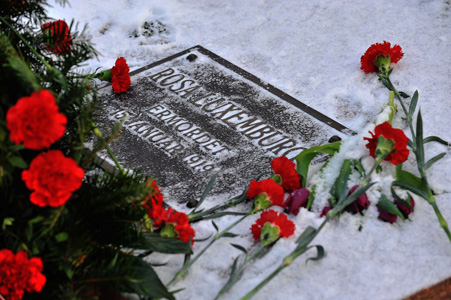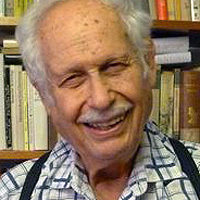
BERLIN-First a glance at long-past history: Featured at many German-American parades and festivals is the “hero” who helped fight the American Revolutionary war, Friedrich Wilhelm Augustin von Steuben, sometimes known as Baron von Steuben. The “Steuben Day” parade in New York and similar parades around the country in the Fall are attended by thousands. Von Steuben’s contributions to American independence are celebrated by German Americans and others at countless annual Oktoberfest celebrations.
Unfortunately and unbeknownst to many, however, von Steuben had to either change or conceal important facts about himself.
His noble title and rank as “Prussian Lieutenant General” was an invention; he had really been dropped from Friedrich the Great’s army as a lowly captain.
That he, like Frederick the Great himself, was probably gay also would not have gone over well in certain circles back then as it would not go over well in certain circles today.
So with the help and advice of Benjamin Franklin in Paris and a stunning general’s uniform from Franklin’s tailor, he was able to impress George Washington and other top officers-and when he got to America, Steuben proved his mettle; amidst the freezing huts and tents at Valley Forge he played a major part in forging a disciplined, fighting and victorious revolutionary army. You can see a statue of him in Magdeburg, where he was born.
In any case, von Steuben’s hometown is in the news again these days. As in Valley Forge, the weather this time of year can be icy. But it wasn’t hostile Hessians who were on the march in Magdeburg recently. Far worse than that – it was Nazis.
For years now Nazis have been marching annually in Dresden to mark the anniversary of the almost total destruction of the city by British planes in the historic 1945 air raid. The marches and rallies have been met increasingly with resistance and opposition from anti-fascist groups so, hoping to march where they would have less difficulty, the right wingers set their sights further down the Elbe River on von Steuben’s home town, Magdeburg. The city of Magdeburg was a state capital in the former East German Democratic Republic.
Once again they chose a date near the day when Magdeburg suffered its most devastating air raid, January 16, 1945. Again they hoped to win sympathy for their constant claim that in World War II it was Germany that suffered worst of all.
Just like in Dresden, the city fathers felt compelled to protest the arrival of several thousand Nazis from all over Germany and neighboring countries but wanted no troubles and no confrontations; a downtown street of protest with booths and stands offering everything from books to hot wurst was OK – while the Nazis were permitted to march, but well away from the downtown area.
That was the policy of the Christian Democrats, the Social Democrats, and some unions and church groups. More militant organizations, including the Left and the Greens, wanted rather to block the Nazi marches altogether, as they had done in Dresden, and convince them never to return with their typical bull-like napes, their black flags, and their menacing anti-foreigner slogans.
As in Dresden, the official policy was against any anti-Nazi blockades, and here those who wanted to facilitate a march by the Nazis succeeded. They altered the Nazi route at the last moment, using the Elbe itself to protect the right-wingers. So while the anti-Nazis waited and froze on the east side of the river, the police protected the Nazis marching on the west side – including a provocative rally in front of the left wing, anti-fascist center.
When anti-fascists then tried to get there to protect their center they were encircled by the police; some were arrested. As always, estimates varied: there were probably about 900 Nazis and 2,000 anti-Nazis.
A hundred miles eastward, in Berlin, the picture was very different. Sunday was the day when those of left-wing persuasion mark the memory of Karl Liebknecht and Rosa Luxemburg, brutally murdered by the Nazis’ predecessors in January, 1919. Thousands go every year to the memorial site where they were once buried, often placing red carnations around the large, simple stone saying: “The dead warn us!” Around them, in a semicircular wall, are urns of leading socialists and communists from the early 1900’s until 1990.
Every year a group of several thousand mostly younger people, with flags, banners and music, walk two and a half miles from Karl Marx Allee. On arriving they join the far bigger main crowd who go by subway or other transportation and walk the last seven or eight blocks to the memorial site at the edge of a larger cemetery holding the graves of many progressives.
This annual event, renewed after the Nazi years by the GDR government, was retained after the end of the GDR and became an emotionally moving gathering not just for all the faithful old leftists but also for a growing group of young people.
But this spirit and solidarity with both the past and the international present always angered some important people, and every method was used to break the tradition. In the 1990’s they tried intimidation, with constant frisking, hundreds of police vans, helicopters, mounted cops and frequent attacks into the marching group, often when they spotted some young Kurd carrying a small flag of the forbidden Kurdish Workers’ Party (PKK).
One year a dubious written threat to blast the demonstration and resultant Verbot [ban] (and withdrawal by the Left) almost ended the march, but many defied the ban, using side streets to get as close as they could.
Another threat came a few years ago from within the Left party, whose leaders are usually the first to place their carnations at the site. A stone marked “To the Victims of Stalinism” was embedded near the entrance, causing immediate controversy; many considered this the wrong place for such a stone or were dismayed at what they saw as support for constant attempts to denounce the GDR as just another dictatorship, hardly better (and perhaps even worse) than the Nazis.
There were scuffles, a few radical hotheads tore up flowers placed there, and the media lapped it up. But aside from some quarrels, the people keep coming, if not in the huge numbers of the first post-GDR years – many are too old, many are gone – but with a new infusion of enthusiasm from the young people.
This year another dent was made. Among those taking the longer route are always groups of ultra-leftists from all Germany (and other countries as well). There are Maoist groups, Trotskyist and Spartakist groups in a wide variety, plus some Turkish, Kurdish and smaller immigrant groups, with their varied banners and a chance at the loudspeaker truck.
In general the factions simply agreed to disagree. But last year it was noticed that one radical Turkish and one radical German group carried banners with portraits not only of “Karl and Rosa” and occasionally Lenin but also of Stalin and Mao.
The leaders of the march managed to push such banners well to the rear, but a clearly unspontaneous group of young men in a building along the route tried with slogans to provoke a melee over the issue. A resultant shouting match and perhaps a few blows went unnoticed by all but a few among the marchers. But somehow the media were right there, and they made the most of it.
This year, using that little controversy as justification, an autonomous youth organization (connected to the Left party) called “Solid,” decided to join the West Berlin Young Social Democrats, the Young Greens and others in boycotting the four-kilometer march. They held a separate memorial ceremony in West Berlin, ending at the place on the canal where Rosa Luxemburg’s body was thrown into the water.
This split was viewed with great dismay by a majority who earnestly regretted glorifying Stalin or Mao but saw the split as a new danger – possibly resulting in the whole memorial tradition breaking up and dying out.
In the end, only an estimated 400-800 showed up for the new grouping in West Berlin; about 4,000 militants walked the traditional four-kilometer route but, lacking some who went off to the other march, had a proportionately larger share of ultra-left so called “revolutionaries.”
But at the memorial site the crowd was friendly and thoughtful. Many were pensioners, many others are active for the causes of peace, the environment and democratic socialism as well.
Not all was peaceful though. A small crowd had gathered, as usual, around the controversial stone. Although they too were peaceful, two grim cordons of menacing, helmeted cops stood nearby, the outside ring with police dogs.
Then a young woman passed by, quite innocently. But her dog, half the size of the police dogs, was soon in an angry moment, first snarling, then loudly barking and lunging at one of the bigger police dogs, who answered in kind. In a minute all the dogs were wildly barking. Even after the little marcher had been pulled away by his owner, the police dogs began to bark and snarl at each other. The crowds laughed as the canine cops pulled away all of their charges. Some congratulated the woman and her little “left wing” dog for its victory over the mean canines.
But now, for the five larger German political parties, attention is focused tensely on the state elections in Lower Saxony next Sunday. The Left, the right-wing Free Democrats and the young Pirates’ party must all fear missing the needed five per cent and getting left out of the legislative game in Hanover, the capital.
While the Christians fear losing to a coalition of Social Democrats and Greens, the Social Democrats, facing a continuing decline in support, must also fear ending up out in the cold. All are watching the last minute maneuvers of the opponents and staring at the latest poll figures like rabbits hypnotized by snakes.
The results will certainly influence the big vote in September. The weather in Germany remains icy. And while many of the leaders frequently change or conceal the truth about themselves, not many, unfortunately, are as valiant as “Baron Steuben.”
Photo: Carnations lay on the grave of Rosa Luxemburg at a cemetery in Berlin, Jan. 13. This is the 94th anniversary of the deaths of Rosa Luxemburg and Karl Liebknecht, killed Jan. 15, 1919, by right-wing militiamen. dpa/ Paul Zinken/AP









Comments